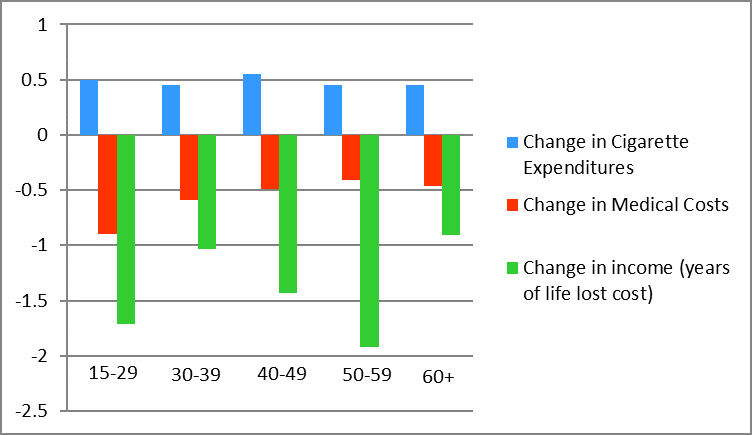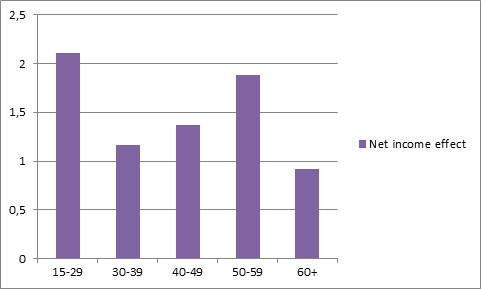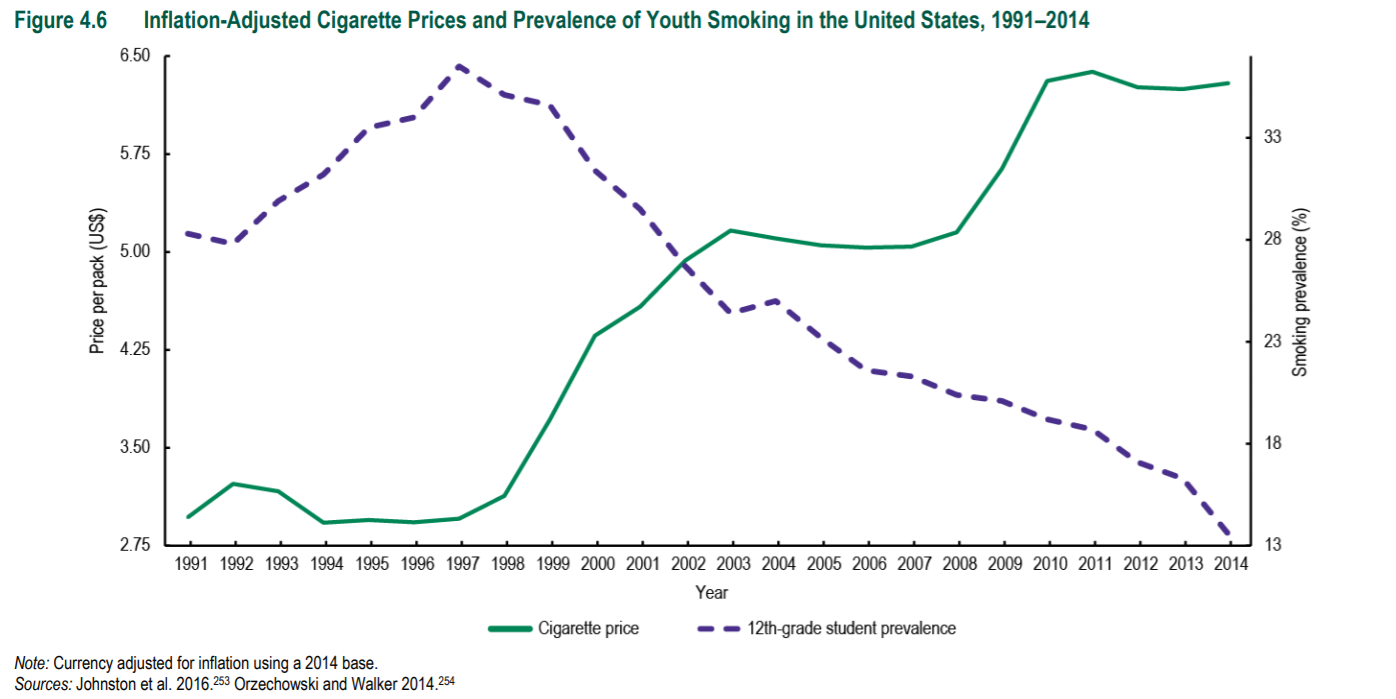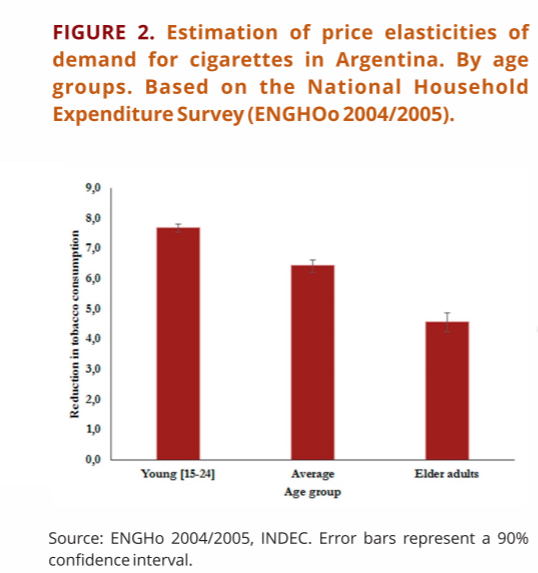World No Tobacco Day 2020: Tobacco Taxes Are a Powerful Tool Against Tobacco Industry Efforts to Attract Youth
Sunday, May 31, 2020 is World No Tobacco Day and this year’s theme focuses on efforts by the tobacco industry to target young people. Raising tobacco taxes is one of the most effective tobacco control policy tools to discourage tobacco use in the overall population, but even more so for young people. In observation of World No Tobacco Day, this Tobacconomics blog entry highlights research from our partners around the world that demonstrates how increasing taxes on tobacco products is a particularly effective policy to prevent and reduce tobacco use among young people.
Over the years Tobacconomics researchers have collaborated as scientific editors, coauthors, and reviewers of research that has examined the effects of tobacco taxes on youth. The National Cancer Institute Monograph The Economics of Tobacco and Tobacco Control draws upon the global evidence from both high-income and low- and middle-income countries to confirm economic theory:
Young tobacco users are likely to spend a greater share of their limited disposable income on tobacco products and therefore may be more sensitive to price than adult tobacco users. Compared with adults, youth are more influenced by the behavior of their peers. Thus, changes in tobacco use by some youth as a result of changes in prices will lead to changes in tobacco use by other young people. Furthermore, because of their relatively shorter time-consuming tobacco products, young people may be less addicted to tobacco than adults, suggesting that youth will respond more quickly to changes in price. Similarly, young people are generally more present-oriented than adults, implying that they will respond more to changes in the immediate cost of tobacco use (e.g., prices) than to changes in long-term costs (e.g., health consequences) (NCI-WHO, 2016: 139).
The Figure below, taken from the Monograph, vividly shows the inverse relationship between cigarette prices and youth smoking prevalence among 12th grade students in the United States during the period 1991-2014.
Source: NCI-WHO Monograph 21: The Economics of Tobacco and Tobacco Control (2016).
More recently, Tobacconomics researchers collaborated on the article, “Association of Tobacco Control Policies With Youth Smoking Onset in Chile” in 2019. The research examined the effects of tax increases on tobacco products from 2001-2015 on Chilean youth. The study notes that the real price of cigarettes increased 6% in 1999, 3% in 2000, 11% in 2001, and 5% in 2003, and then increased between 7 and 19% annually from 2009-2014. The study found that in the early 2000s, 82.5% of teens (16-19 years) in 2001 and 81.2% in 2003 had initiated smoking at a mean age of 13.5 years old compared to the early 2010s, when the proportion of teens who had started smoking decreased substantially to 63.6% in 2011, 64.7% in 2013, and 65.4% in 2015, whereas the mean age of starters had increased to 14.2 years. The findings suggest that higher prices and the tobacco control policies enacted in 2006 were associated with lower hazards of starting smoking, and the results add to the increasing evidence that higher cigarette prices are associated with a reduced hazard of starting smoking in LMICs.
Earlier this year, Tobacconomics partner in Argentina El Centro de Estudios Distributivos, Laborales y Sociales (CEDLAS) released a Report titled, “Tobacco Taxes in Argentina: Toward a Comprehensive Cost-Benefit Analysis” and a Policy Brief, “Effects of Tobacco Taxes on Income Distribution in Argentina”. The research found that faced with a tax increase that would increase the price of cigarettes by 20%, young people (ages 15-25) in Argentina would decrease smoking prevalence by 6% compared to 3% for the overall population. Young people show a greater price elasticity of demand for cigarettes than other age groups at -0.767 (Figure 2 below) and are thus, more likely to reduce cigarette use if taxes and prices are raised.
Source: Cruces, et al. (2019) Tobacco taxes in Argentina: Toward a comprehensive cost-benefit analysis.
In Brazil, Tobacconomics partner Universidade Católica de Brasília (UCB) came to similar conclusions in their Policy Brief and Report series, “An Extended Cost-Benefit-Analysis of Tobacco Taxation in Brazil.” The research mainly studied the distributional effects that a 10% price increase would have on vulnerable populations in Brazil, including younger age groups. The research estimated conditional price elasticity (or smoking intensity) at -0.54 for people aged 15-29 compared to -0.19 for those 60 years and older. Young people also reduced medical expenditures on tobacco-related illness and increased net income as a result of the gain in working life years (Figure A). As a result, the highest net income gains (2.11%) were observed in this age group (Figure B).
Figure A: Simulation of Changes in Cigarette Expenditures, Medical Costs, and Working Income with a 10% Price Increase in Brazil, by Age Group 
Source: Divino, et al. (2019) An extended cost-benefit analysis of tobacco taxation in Brazil.
Figure B: Simulation of Changes in Net Income with a 10% Price Increase in Brazil, by Age Group 
Source: Divino, et al. (2019) An extended cost-benefit analysis of tobacco taxation in Brazil.
As we observe World No Tobacco Day and the tactics of the industry to attract young people to tobacco products, the evidence shows that taxation is a powerful policy tool to discourage smoking initiation and prevent addiction at an early age. Tobacconomics research, along with studies around the world, increasingly from low- and middle-income countries, demonstrate that raising tobacco taxes is an effective policy to reduce tobacco use, especially among youth given their greater sensitivity to price changes.



